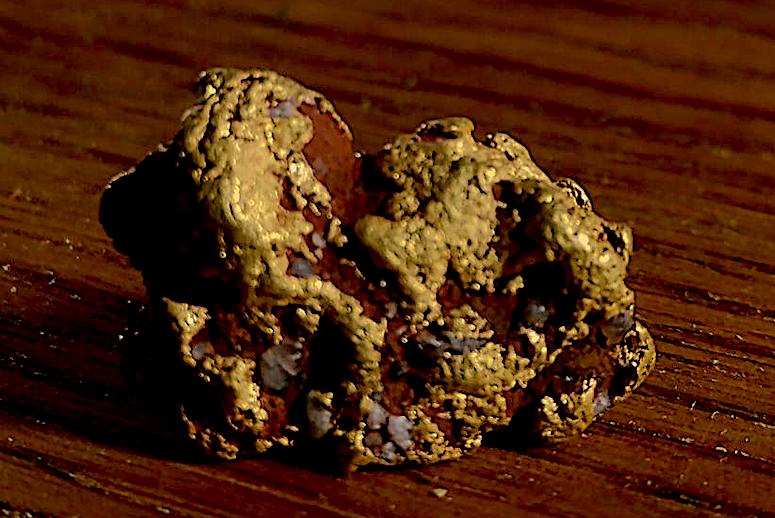
Germany is rich in history, including a past filled with the pursuit of gold. Gold mining in Germany on a commercial-scale ended long ago, but hobby prospecting and gold tourism are very much alive throughout the country.
Thuringia
The east-central German state of Thuringia is legendary even now for its golden history. The mountains of the south Thuringian Forest are known to contain plenty of small gold deposits.
Gold mining in the area has been documented since at least 1200. It is thought that even the Celts travelled to the area in search of the metal.
Gold has been part of Thuringia’s history since the twelfth century, but commercial gold mining ended near the end of the 17th century as a result of resource depletion.
In 2004, Thuringia made the news when a prospector discovered a 9.64 gram (1/3 oz.) gold nugget in a waterway near Katzhutte, a town within the Thuringia state. The gold nugget was the largest discovery in 500 years for that region of Germany. Though the find created a media frenzy, other substantial discoveries did not materialize.
Steinheid
The village of Steinheid saw its heyday in gold mining throughout the sixteenth century and was the prime producer of Thuringian gold. Gold had been discovered in the Steinheid district of Neumannsgrund on the Schiffskuppe during that period. The west side of the mountain also supported a gold mine that was especially productive.
Though the terrain is treacherous and overgrown, remnants of the mining days can still be seen on the mountain. The Grümpen waterway, which ran through Neumannsgrund, also yielded gold and may be an easier trek for prospectors than the climb to the mines of Schiffskuppe.
Later mining endeavors carried out between 1690 to 1698, then again from 1822-1824 were largely disappointing. In 1923, yet another attempt to resume gold mining in the area was thwarted. It seems that the gold of Steinheid can support hobby prospectors but not commercial workings, even during times of high gold prices.
Read: Can You Actually Make Money Mining for Gold?
The Schwarza River
This river’s claim to fame is its plentiful supply of gold, apparently the richest of all rivers in Germany. Since the twelfth century, the Schwarza Valley has produced placer deposits.
The rights to Schwarza Valley gold was handed over to the Counts of Schwarzburg in 1442, but today, panning for gold in the Schwarza is open to all. Training and tours are available for gold hobbyists during the spring and summer months.
Read: Gold Panning Tips

The Rhine
Historians are certain that the ancient Gauls sourced some of their gold from the Rhine. Records from 667 AD discuss Ethico, Duke of Alsace, holding power over the distribution of rights to pan for gold in the Rhine.
Gold production from the Rhine was maintained throughout the Middle Ages until New World gold imported from America became more widely available, lowering the value of hard-won local gold.
Small scale commercial mining projects became more prevalent between the years of 1750-1850. Many of these were set up along the Rhine, from Mannhein, Germany and extending into Basel, Switzerland. A successful year of gold production at that time would yield up to 15 kg of gold.
Though the quartz veins and amphibolite schists within the Swiss Alps have likely contributed gold to the Rhine, a more recent gold discovery in 1987, in the Münster Valley of France alludes to a second source. Reports suggested that an analysis of the Münster Valley gold matched the chemical analysis of Rhine gold recorded by French chemist Daubrée in 1852.

Neuenburg
Neuenburg, a charming town on the edge of the Rhine, draws many hobby panners each weekend. Compared to other cities along the Rhine, Neuenburg sees the most alluvial gold pulled out of its waters.
It’s worth noting that the amount of gold is still small and certainly hasn’t caused a gold rush of any sort, outside of tourism. The gold flecks in the waters near Neuenburg tend to be less than a millimeter in width.
Pyrite in the sediments will also need to be sorted out from the true gold. Most of Neuenburg’s gold rests in the detritus of the Rhine and can be accessed by turning over the riverbed sludge with hand tools.
Nuremberg
Though not located on the Rhine itself, it is connected via the Rhine–Main–Danube Canal. There have been reports of fine textured gold deposits in the Danube River south of Nuremberg, as well as at its meeting point with the Rhine.
Historically renowned for its gold, Nuremberg would be a legendary place to try your hand at prospecting. It is a popular destination for hobbyists as the gold is reportedly of high quality.
Next: In the Italian High Country Prospectors are Finding Gold
